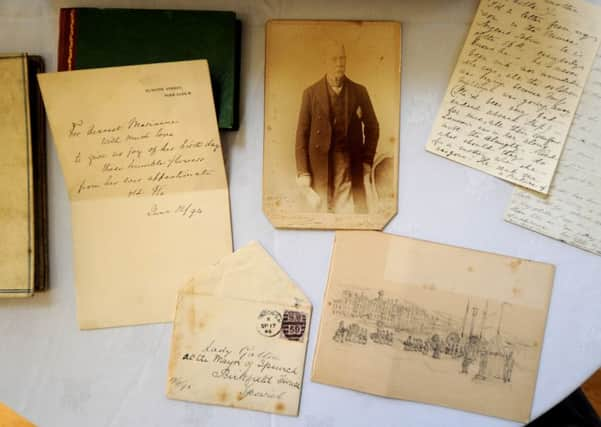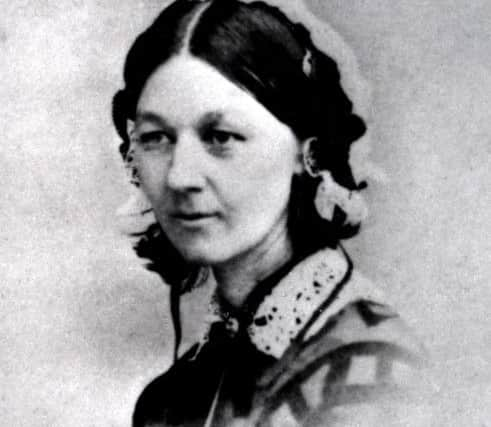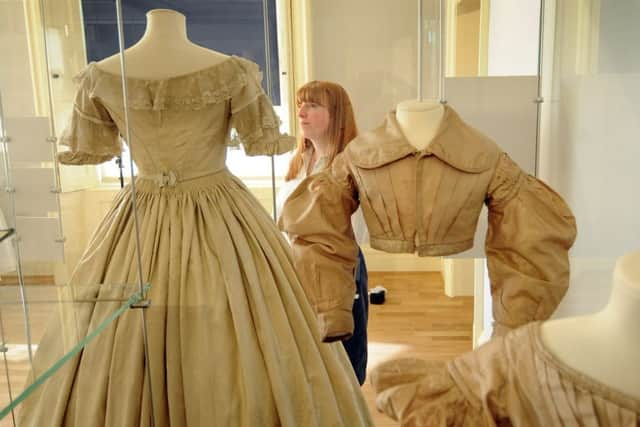Letters reveal another side to the Lady with the Lamp


Now recently discovered letters between Florence Nightingale and her cousin, Marianne Nicholson, are going on display in Yorkshire, giving an insight into her life before the Crimean War, and the time she spent afterwards - which included influencing the designs of one of Yorkshire’s biggest hospitals.
“Florence and Marianne were very close as cousins, and spent a lot of time together when they were younger,” said the curator of costume and textiles at Leeds Museums and Galleries, Natalie Raw. “The letters, which were recently discovered at Trelissick House in Cornwall, reveal a lot about the Florence we don’t know so well - she struggled to accept her position in society, and how her relationship with Marianne changed as they chose different paths.
Advertisement
Hide AdAdvertisement
Hide Ad“As a Victorian ladies, they were expected to get married, have children and run a household. Florence chose not to do that but Marianne went down the traditional route.


“A lot of Florence’s family did not understand her desire to be a nurse, and in Victorian high society nursing was seen as something for the lower classes. Some of the letters reveal Florence’s frustrations as a young woman. It wasn’t until she was in her 30s that her family allowed her to do what she so wanted to do.”
Some letters are from her time in the Crimea, and one sketch by Lady Marianne shows Miss Nightingale and her team in France in 1854, as they made their way to Crimea.
But why Leeds, when Miss Nightingale was born in her namesake Florence and grew up in Derbyshire? Lady Marianne, who was married to the engineer and hospital reformer Sir Douglas Galton, had a daughter, Miss Nightingale’s god-daughter, Gwendolen Gascgione.
Advertisement
Hide AdAdvertisement
Hide AdGwedolen became the Lady of Lotherton Hall, and after the death of Sir Douglas in 1899, Lady Marianne moved to Lotherton.


After her return from Crimea, Miss Nightingale then became a trusted advisor of Sir Douglas, who had an interest in ensuring hospitals were built in the most sanitary conditions. When asked by surgeons to advise on the design of wards at Leeds General Infirmary, Sir Douglas consulted Miss Nightingale.
“Florence was very ill on her return from the Crimea but spent a lot of time writing letters,” Miss Raw said. “Together with Sir Douglas, she drew up plans for how the new wards in Leeds should be built, to be healthy for both patients and the nurses, with for example, windows on both sides of the ward to ensure the air could flow. They were very much a partnership.”
Included in the exhibition are paintings, childhood sketches, jewellery, toys, and Miss Nightingale’s desk that was brought to Lotherton by Lady Gwedolen. Also on display are key fashion pieces from the era, including a day dress and evening dress similar to those Miss Nightingale and her cousins worn in sketches by Lady Marianne.
Advertisement
Hide AdAdvertisement
Hide Ad“As young women, Florence and Marianne were very fashionable,” said Miss Raw. “Everyone has this view of Florence as a dark figure but Marianne’s sketches show her in bright colours going to balls. She was wearing pretty prints and colours.”


Our Cousin Florence opens at Lotherton Hall, Aberford, Leeds on Friday and runs until December.
Play brings letters to life
Dialogue from Florence Nightingale and Marianne Nicholson’s correspondence has been used to create an original play that will be performed by 60 local children to coincide with the exhibition.
Written by Jane McNultie, it uses letters written during Miss Nightingale’s life, intertwined with illustrations of the vision she received at 16, calling her to do God’s work. In total. 60 young performers ages between eight and 19 will take part in the production.
It will be performed at the Carriageworks Theatre in Leeds on April 18 and 19 and at Lotherton Hall on June 11 and 12.